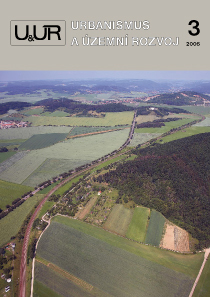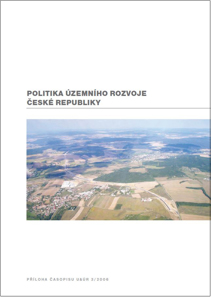

The Present and the Future of Czech Railways in the European Context, by Vojtěch Kocourek
European Transport Policy for 2010: Time to decide, a White Paper published in 2001 (thus before the last EU enlargement by ten new members) pinpoints the unbalanced developments in the distribution of transportation work, disadvantaging the modes which are friendlier to the environment: the rail and the inland water transport. Also remarked is the rapid growth of road transportation and the resulting consequences upon the environment, public health, and the economy of energy resources. Three scenarios are analyzed, based either on the increase in road transportation prices, or such increase plus the development of road infrastructure, or both of these measures plus the preference to other transportation modes such as railways and the circumlittoral or inland shipping. Air transportation is also commented on, its development being intense but, similar to road transportation, affecting the levels of noise, global emissions, and the consumption of fossil resources. On the international scale, the stress the EU puts on the development of railway transportation is supported by the EU legislation and the strategy of financial support to railway projects.
Rail Network Reconstructions in Germany and Austria, by Milan Körner
Major reconstructions of principal railway lines and, especially, the construction of high-speed routes, is a multinational issue, markedly so for smaller countries where planning without clear contexts may become much of a problem. Of the countries bordering to Czechia, such process has been running long now in Germany and Austria. These countries, circumfusing about the most of the Czech territory, host the most important connections to the north, west and south of Europe. There are some extremely important metropolitan regions in these countries, inducing the need of prompt and reliable connections, such as Hamburg, Berlin, the Ruhr region, Cologne, Frankfurt, Stuttgart, Leipzig/Halle, Munich, and Vienna, all of these populated between 1.4 and 7.5 million. The railway infrastructure development in these countries is largely determining the quality of the neighbouring countries’ links and the timing of the reconstruction of the neighbours’ networks.
Current Situation in Retail Networks of Czech Towns: Zlín, a Geographic Probe, by Michaela Ordeltová & Zdeněk Szczyrba
The development of retail shopping networks in most Czech towns and cities has been very dynamic in recent years, instigating professional and public debates over various potential consequences. The wave of decentralization and atomization of retail shopping at the beginning of the transformation period was replaced by a huge wave of internationalization at the end of the last decade, in which most of the relevant European networks have been involved. Current trends make it evident that the development of modern shopping networks is shifting within the hierarchy of Czech settlements: towards smaller towns. This is not only the case of Tesco hypermarkets, now run by their British owner in a plenty of provincial towns, but of many more chains, now opening their shops in much smaller settlements than a few years before.
Metamorphosis of Brno’s Squares; Reconstruction Preparations in Terms of Spatial Planning and Investments, by Jana Tupá & Radoslava Cicvárková
Three major squares of Brno, located in the historic city centre, make up a virtual triangle, described by one of the authors as the head, the heart and the guts of the town.
Authentic in the irregularly triangular shape made by the intersecting historic tracks and the town brook, Náměstí Svobody (the Freedom Square, previously known as the Lower Square) is situated in the very centre of the old town. Zelný Trh (the Cabbage Market, previously the Upper Square), still a market place today, is placed on a slight slope under the Petrov Hill, while the smallest of the three, Dominikánské náměstí (the Dominican Square), once a market place too, is now a mere “site in front of the town hall”, filled with cars.
All of these squares make part of Brno’s historic centre which was declared Urban preservation area in 1989. The Regulation Plan of the Urban preservation area (1999), made up in correspondence to the Municipal Plan of 1994, is focusing closely upon public zones, defining the requirements for their revitalization and indicating zones for tender competitions. Important points for the character of public areas were specified, such as the protection of housing, creation of a vivid commercial parterre, transport and parking organization, supply and sewerage systems, diposition of surfaces, public and ceremonial lighting, greenery, art decoration, involvement of the historic underground, and urban furniture.
Sad to confess, the requirements to comprehensively and conceptually accomplish the Regulation Plan remain difficult to fulfil, as the space had been too much neglected and the lack of finance is omnipresent.